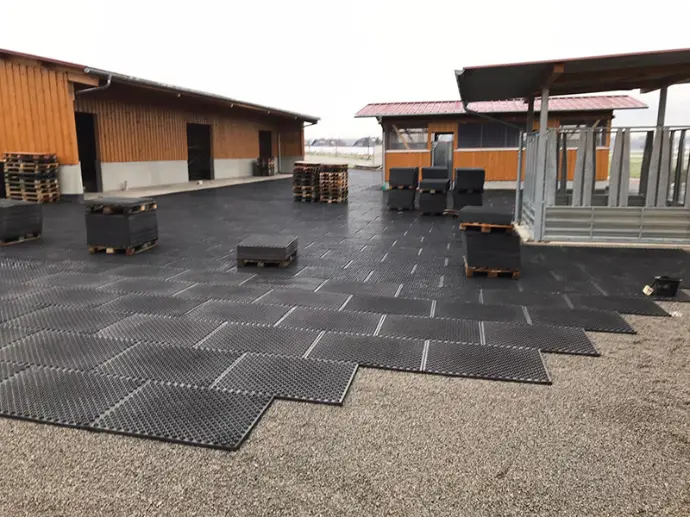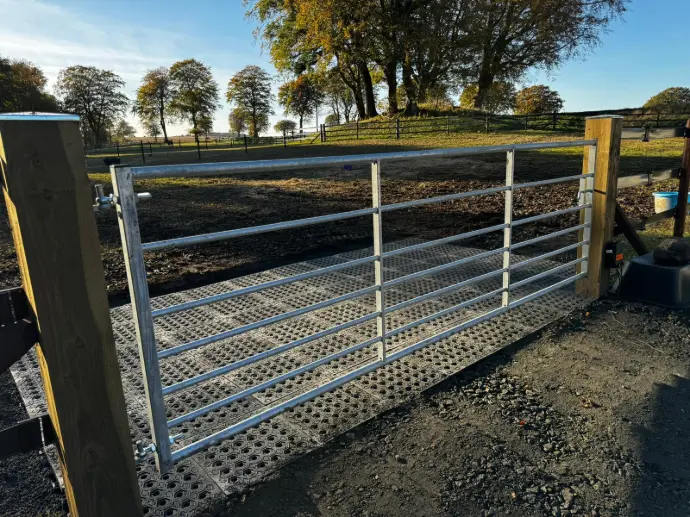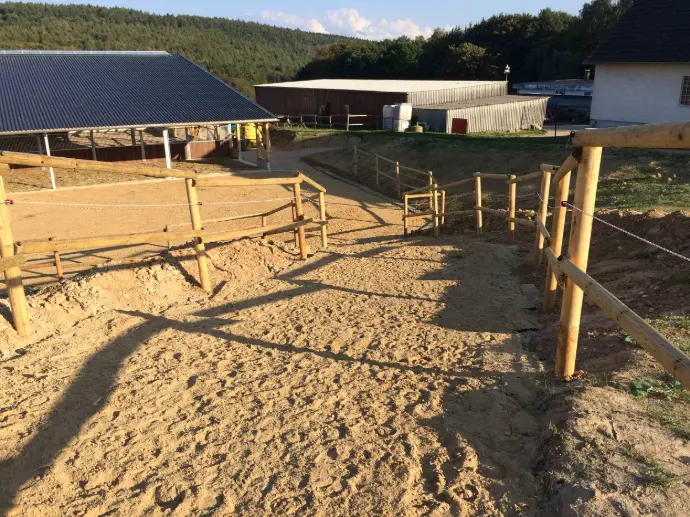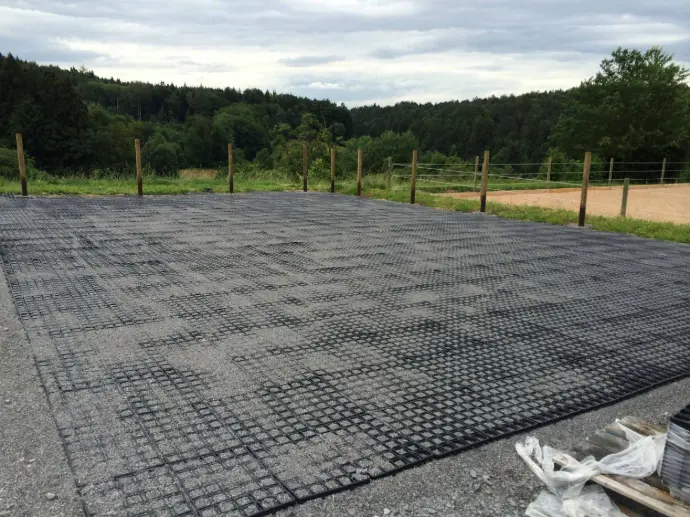Introduction - Outdoor Equestrian Flooring
Managing poor footing is a year-round challenge for equestrians, not just during the wet winter
months. Rain, heavy use, and changing seasonal conditions can quickly turn well-maintained
areas into a swamp of mud, creating a host of problems for horse owners and their horses.
In this blog, we delve into the challenges poor footing presents, the impact it has on horse health, and how our matting solutions can transform your equestrian facility into a mud-free, stable environment throughout the year.
Challenges Faced by Equestrians Due to Poor Footing
Improper ground is one of the most challenging hurdles equestrians face during the wetter
months. Mud-drenched areas, or poached ground, are not only unsightly but restrict access to
key parts of a facility. Horses naturally churn up high-traffic zones such as gateways and
walkways, leaving them tricky to access and dangerous for humans and animals alike. Not only
this, limited access to turnout pens and grazing fields can have a knock-on effect on the
efficiency of the business. Less grazing means horse owners must rely more heavily on
supplementary feeds, such as hay or higher volumes of hard feed to ensure their horses still
receive adequate nutrition (1). This added cost could strain budgets and create logistical
headaches during a season when resources are already stretched. Additionally, as the weather
becomes warmer, the churned-up ground can begin to solidify in the given shape left by high
traffic movement, making the ground uneven and increasing the risk of injury to both horse and
owner.
The Impact on Horse Health
Poor footing doesn’t just create practical issues; it can have serious implications on a horse’s
health. Extended exposure to muddy conditions, like standing in poached gateways, increases
the risk of infections such as mud fever (pastern dermatitis), which can be painful and tricky to
treat (2).
Additionally, the damp, bacteria-laden environment of muddy ground can lead to hoof
abscesses, which may need further treatment and have a chain reaction on a horse’s overall
physical health. The limitations muddy ground imposes on turnout exacerbate these issues. Horses are naturally active, social animals and prolonged stabling can take a toll on their mental state. A lack of turnout can lead to frustration, boredom, and stress, while restricted movement can increase the risk of conditions such as colic or laminitis. Social needs are also compromised, potentially leading to the adoption of behavioural issues, such as cribbing, weaving, or box walking (3).
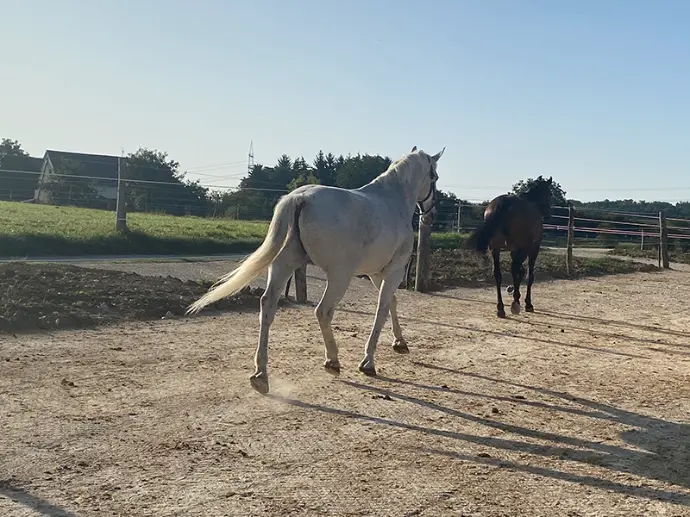
Ground Stabilisation Solutions
Our wide range of innovative ground stabilisation products offers practical, effective solutions to combat poor footing and its associated challenges. Designed with durability and functionality in mind, these mats provide stable, mud-free surfaces for high-traffic areas and beyond.
HIT Top Clean Mats
HIT Top Clean Mats are a versatile choice for creating stable footing in key areas of your facility.
These heavy-duty mats are ideal for walkways, feeding areas, popular standing areas, and track
systems. By ensuring a firm surface underfoot, they eliminate the risks associated with muddy,
slippery ground, providing a safe environment for both horses and owners. Their robust
construction also means they can withstand the wear and tear of everyday use, even in
challenging weather conditions.
Horse owner, Elyssa Noble Hook, stated: “They are incredible! So easy to lay, much better than
other mats I have bought.” Furthermore, Savina Barnes mentioned: “Ordered one pallet of top
clean mats & was so pleased I ordered another. The mats have made a massive difference to
my muddy gateways so well worth the investment.”
HIT Mountain Trail Mats
For facilities with hilly or uneven terrain, HIT Mountain Trail Mats are an excellent solution.
These mats are specifically designed to provide enhanced grip on steep slopes, ensuring that
horses can navigate such areas safely. Whether integrated into a track system or used to
stabilise sloped paddocks, these mats are a reliable way to prevent accidents and maintain
functionality across hilly terrain in all seasons.
HIT Step Mats
Smaller and more portable than the Top Clean Mats, HIT Step Mats are perfect for addressing
specific problem areas such as gateways. Their small design makes them easy to move and
ideal for temporary installations. Whether you’re managing a turnout area or protecting a
frequently used entrance, Step Mats offer a flexible, practical option for keeping mud at bay.
HIT DrainGrid
HIT DrainGrid are an innovative ground stabilisation solution designed to combat moisture
retention within the soil itself. Installed beneath the top layer of material, these grids help to
improve drainage and stabilise the ground. They are particularly effective in areas prone to
holding water, such as turnout paddocks, group-keeping areas, and even car parks. By creating
a dry, firm foundation, DrainGrid minimises the creation of wet mud and ensure consistent
usability throughout the year. For particularly heavy soils we recommend an additional drainage layer.
Healthy Hooves, Happy Horses
Implementing ground stabilisation solutions can transform equestrian facilities, making them
safer, more functional, and more accessible for both horse and owner all year round. By
addressing the challenges of poor footing, these mats help maintain horse health, reduce
long-term maintenance costs, and help you reclaim unusable space during the wetter months.
Reference List
1. The Horse, 2023. Smart Strategies for Winter Horsekeeping. Available at:
https://thehorse.com/1132562/smart-strategies-for-winter-horsekeeping/
2. British Horse Society (BHS), n.d. Mud Fever. Available at:
https://www.bhs.org.uk/horse-care-and-welfare/health-care-management/horse-health/e
quine-diseases/mud-fever/
3. Wiley Online Library, 2023. Equine Veterinary Journal. Available at:
